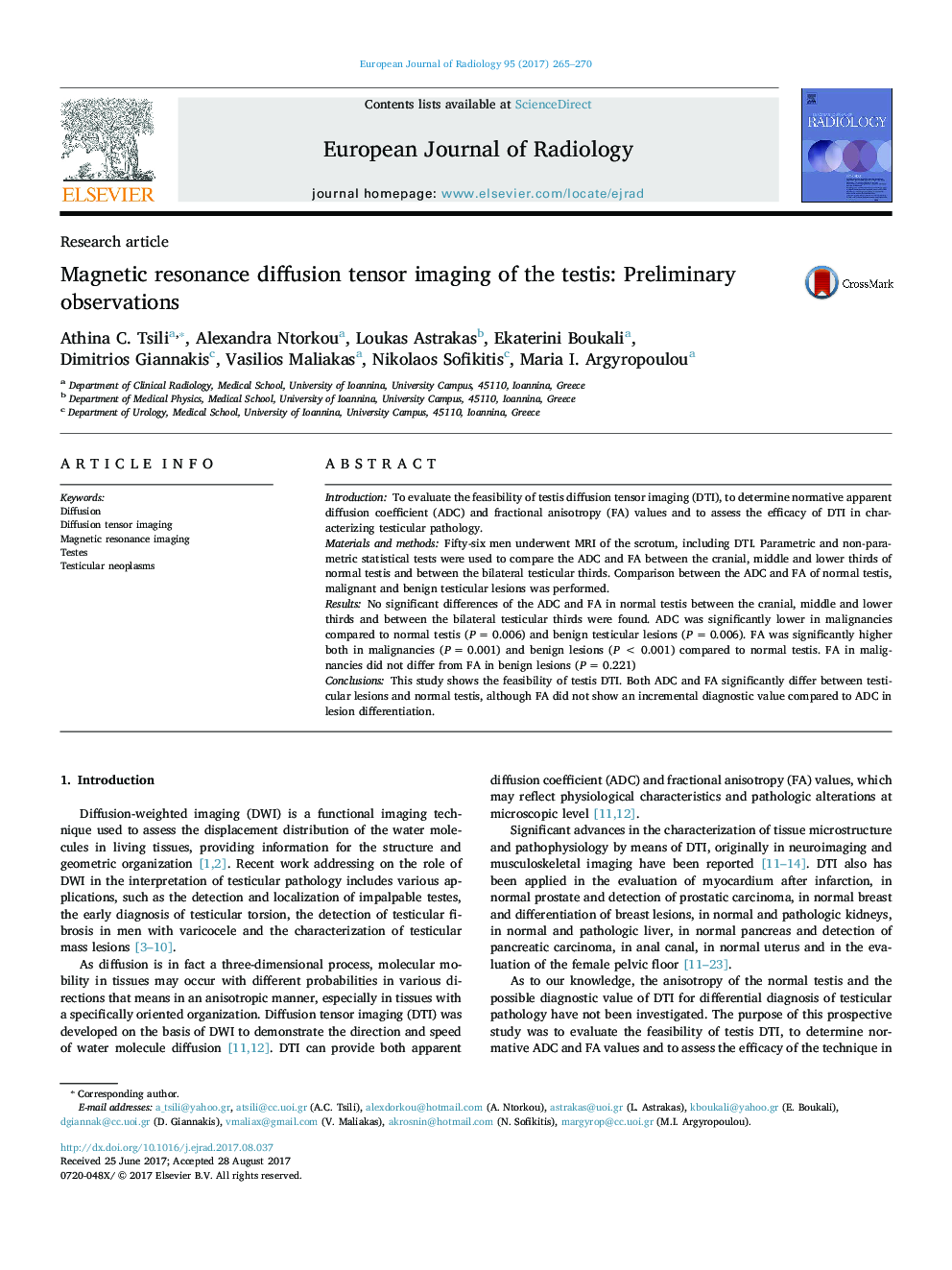| Article ID | Journal | Published Year | Pages | File Type |
|---|---|---|---|---|
| 5726006 | European Journal of Radiology | 2017 | 6 Pages |
â¢Diffusion in normal testis on a 1.5 T magnet is isotropic.â¢DTI parameters can help in the characterization of various testicular lesions.â¢ADC differs significantly between malignant and benign testicular lesions.â¢Both malignant and benign testicular lesions have high FA values.
IntroductionTo evaluate the feasibility of testis diffusion tensor imaging (DTI), to determine normative apparent diffusion coefficient (ADC) and fractional anisotropy (FA) values and to assess the efficacy of DTI in characterizing testicular pathology.Materials and methodsFifty-six men underwent MRI of the scrotum, including DTI. Parametric and non-parametric statistical tests were used to compare the ADC and FA between the cranial, middle and lower thirds of normal testis and between the bilateral testicular thirds. Comparison between the ADC and FA of normal testis, malignant and benign testicular lesions was performed.ResultsNo significant differences of the ADC and FA in normal testis between the cranial, middle and lower thirds and between the bilateral testicular thirds were found. ADC was significantly lower in malignancies compared to normal testis (PÂ =Â 0.006) and benign testicular lesions (PÂ =Â 0.006). FA was significantly higher both in malignancies (PÂ =Â 0.001) and benign lesions (PÂ <Â 0.001) compared to normal testis. FA in malignancies did not differ from FA in benign lesions (PÂ =Â 0.221)ConclusionsThis study shows the feasibility of testis DTI. Both ADC and FA significantly differ between testicular lesions and normal testis, although FA did not show an incremental diagnostic value compared to ADC in lesion differentiation.
